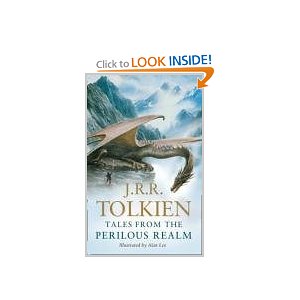Prior to homeschooling, we were very convinced of the benefit of early exposure to second languages. My own parents are European and speak a couple of languages other than English. I speak some German and a little French. My oldest brother's kids had gone through french immersion school and I had done a university research project on its benefits at that time. So when my husband and I had our first two children, it was not a leap to enrol them in french preschools and then french immersion elementary school, especially when we were living in a small french community in northern Ontario at the time.
Enter homeschooling. Or, almost. The only thing that gave me second thoughts about pulling Brittany out of school was that we would be giving up the french. And the last thing the principal asked me when I told her Brittany wouldn't be returning was whether I was going to keep up the french. Sigh.
Well, I tried.
I began with a great program called
Le francais facile, or "the easy french." This is a phonics-based, multi-level program packed with songs, activity sheets, literature suggestions, culture notes, and so on. It looked really good and I was determined to make it work. But alas, it eventually fell by the wayside. My first year of homeschool I became pregnant, was sick, and just couldn't keep up the elective subjects. Besides that, there were aspects of the program that frustrated me. You listen to the story on CD then do some activities ... coloring pages ... I don't know, it just didn't click for us at the time. And frankly, where we were at in our home education, it didn't make sense to put so much effort into french at this time. The four R's - reading, writing, ratin (latin), and arithmetic had to take priority.
We put french on hold for Dawson and just focused on the latin.
For Brittany, we purchased Rosetta Stone - considered the cream of the crop for CD-based second language instruction - and just let her have fun with it, learning at her own pace. I love this program and won't review it here since it is so universally accepted as a good solid program. Keep in mind though, it wasn't designed for homeschooled kids, but for professionals working abroad who need to learn a second language quickly. Nevertheless, it fulfills things like credits for high school, is interactive from a speaking perspective, and kids usually like computer-based learning.
Our next attempt at French for Dawson came in his fifth grade year. This time we co-oped with several other families, several subjects, and worked through a wonderful, phonics-based program by Nallenart called
L'art de Lire. They have three levels:
- L'Art de DIRE (say): Grades K-3
- L'Art de LIRE (read): Grades 3-8
- L'Art d'ÉCRIRE (write): Grade 9
These are workbooks (or downloads) with CDs for pronounciation, and I really liked the format! They can be worked on fairly independently, and most importantly, Dawson loved it! Or you could start a little earlier (maybe grade 3-4) and work through it directly with child. We worked through levels 1&2 the first year, then 3&4 the next. Instead of moving to 5&6, we decided to go back and repeat levels 1-4 to solidify it. Nothing wrong with repeating content according to the learning needs and desires!
You can download sample pages at the website, but they take a while to download so I've included a few pictures of our own:
Introducing the main words for the story, which provides the context for the particular phonogram being studied. In this case, the french 'i'.
The following page introduces the 2-page sweet story, short little sentences with pictures.
And then some busywork pages for each unit.
The busywork pages also introduce the main verbs, like "etre" and "avoir."
Pronouns.
Does this give you an idea of what the program looks like? I like the simplicity of it. And, no photocopying or other type of preparation in order to make the program work. Listening to the phonograms on CD is valuable but it is optional, especially if you have a french friend or some french background. Each book includes unit tests and a final test if you're the testing type :). Overall, the program is turn-key! If you plan on using it for multiple kids, I would opt for the download rather than the physical book.
Because I have been so pleased with the ease of the program, I decided to have a look at the K-3 curriculum for Alexa,
L'art de DIRE, and I'm so glad I did! It is a gentle, conversational program for young students, and I prefer to look at it not as a program so much as an outline of areas I can integrate into the plan, together with
living books. Sound good? The only drawback is I find the download very expensive. Here is a peek at the download:
There are no surprises in this program. It introduces all the basics of conversation and everyday vocabulary. Hello, goodbye, red/yellow/blue, one/two/three.
Tables and chairs and things around the house.
Clothing.
Found these at the dollar store. You can purchase online too. Amazingly, they parallel all the Nallenart units. They are produced by Beaver Books.
Really nice, simple pages. There isn't a "story" so maybe they aren't truly 'living books,' but they are lively and colorful with concepts that are easy to get via the pictures.
Even my 3yo asks to read these books.
Maybe you can incorporate a little French into your homeschool too. It doesn't have to be rigid, it DOES have to work for you, and this works for us! We don't do it everyday, but its flexible enough that when we are really in the mood we can jump right in.
Voila!
![live.faith.homeschool.[sew].](https://blogger.googleusercontent.com/img/b/R29vZ2xl/AVvXsEiqdSm4p3-5HAX1sw-ajErf7HAwX75WrUjAhenjGMyoO18VVxeodwTiqcNRQ7TzV8aNLYcc6Rwcwhq6V57bN6Utzp2DpkL6jQTO1IhHVXzqQPz_5QF8pUxkB1-rs_uiRFBwZiUC5nNbaik6/s1600/blog+header+.jpg)

























